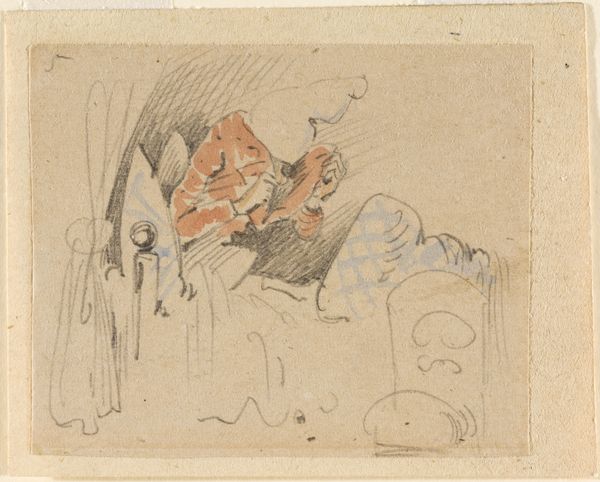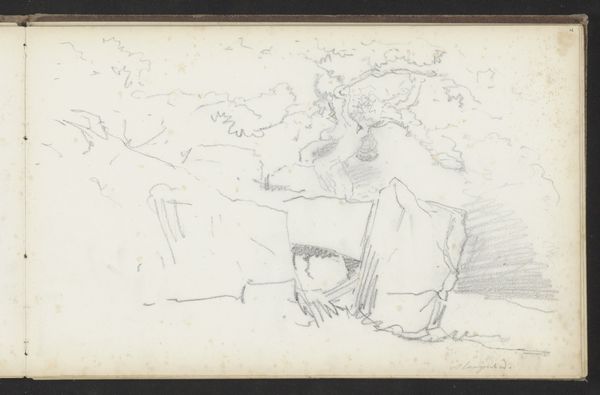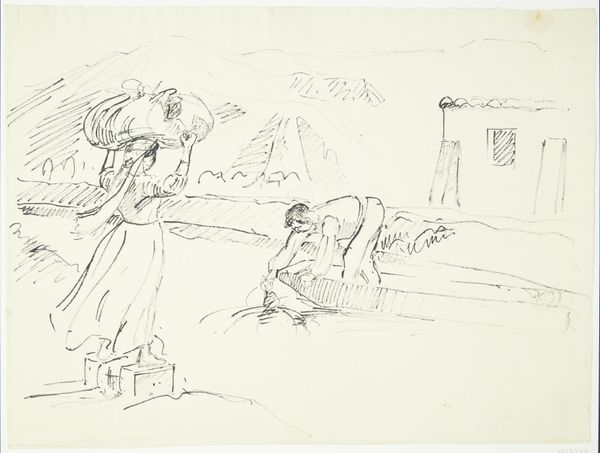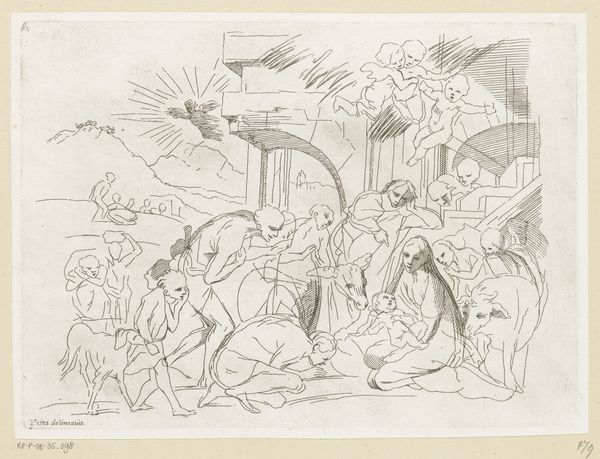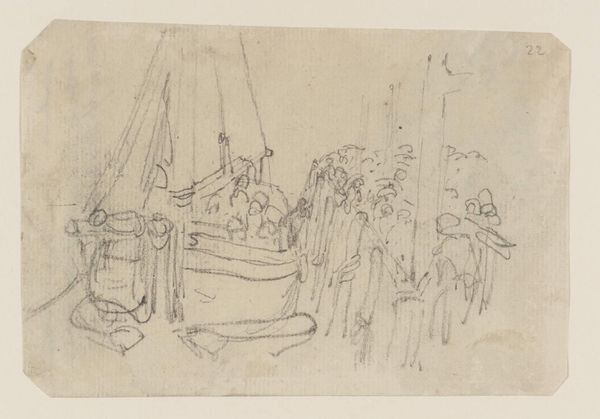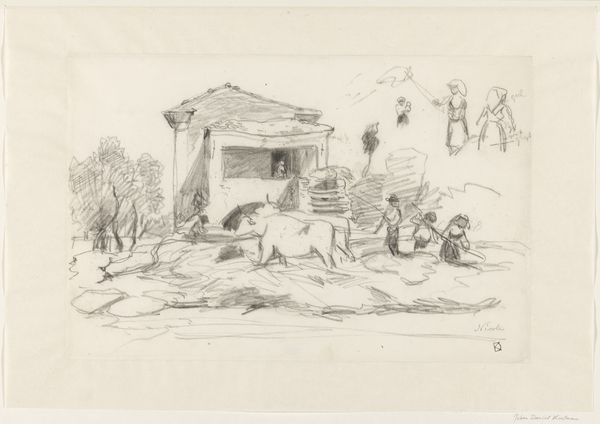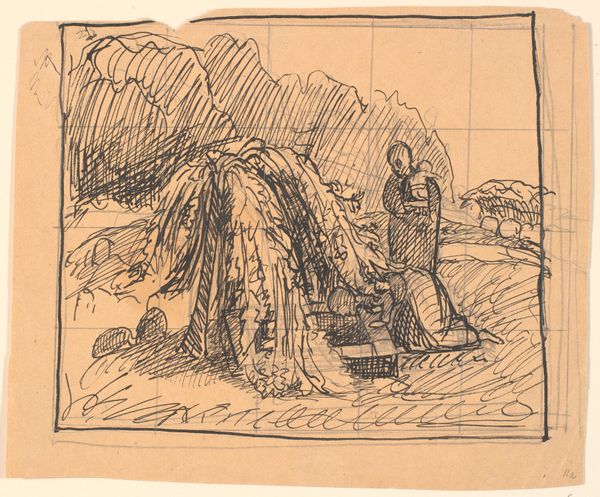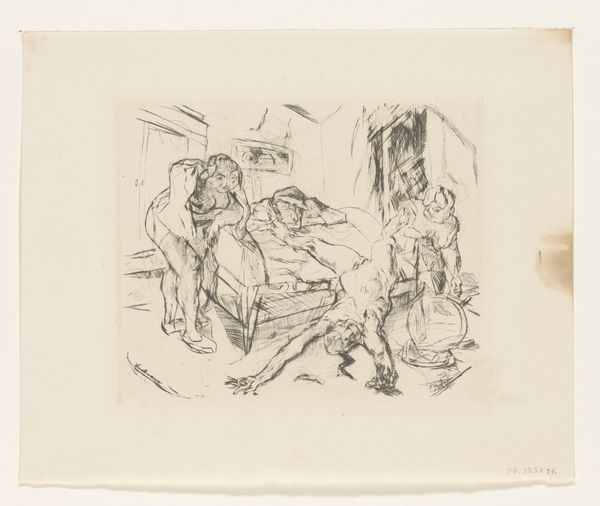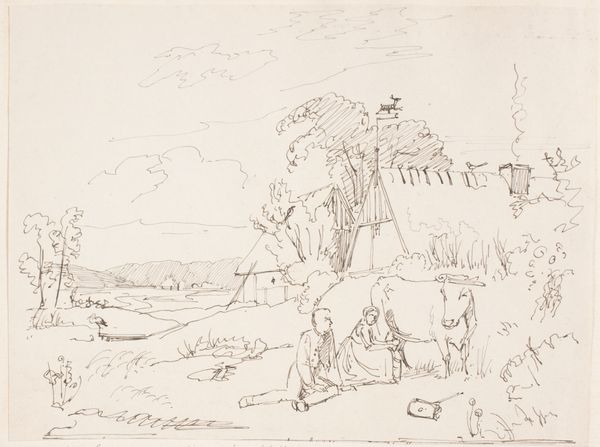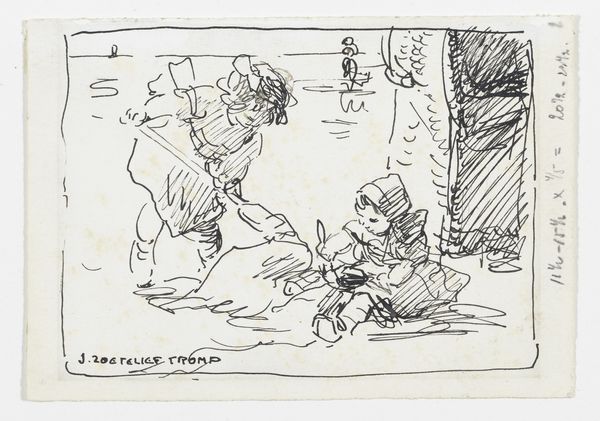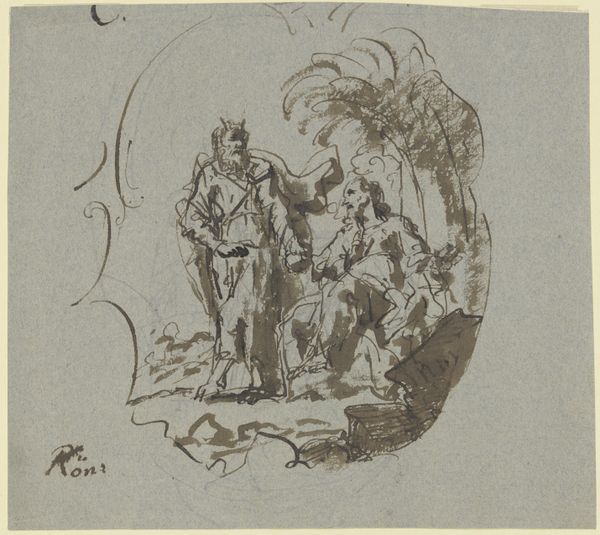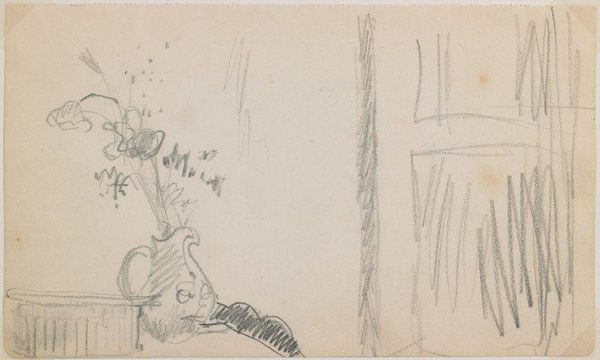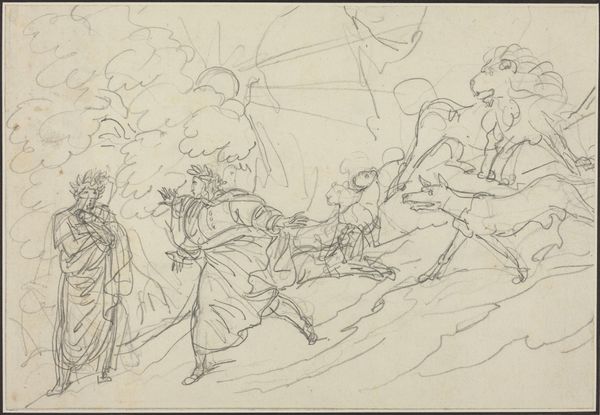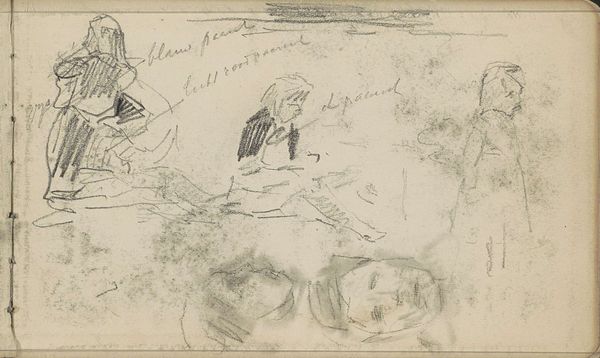
En kvinde, der sidder ved en kilde med tre små børn 1743 - 1809
0:00
0:00
Dimensions: 156 mm (height) x 213 mm (width) (bladmaal)
Curator: This is a pen and ink drawing by Nicolai Abildgaard, a Danish artist who lived from 1743 to 1809. It’s titled "A Woman Sitting by a Spring with Three Small Children" and is currently held at the SMK, the National Gallery of Denmark. Editor: Wow, it feels so immediate, almost like catching a glimpse of a fleeting moment. There’s a rawness to the sketch that I find really appealing, almost as if I found the drawing in the artist’s sketchbook. What do you think about that tree? It looks like smoke, right? Curator: Absolutely, and it also shows his commitment to neoclassicism but simultaneously embraces elements of emerging Romanticism. Abildgaard, as a professor and director at the Academy, really shaped the artistic landscape of his time. Think of him engaging with ideas of family, nature, and a sort of return to a more "natural" state, influenced, perhaps, by the philosophical writings of Rousseau, specifically related to education and childhood. Editor: The mother is a real presence, even if her face is shadowed. She almost melds into that dark wash he’s used. The children, though, they are a wriggling mass of limbs! It's kind of cute. Is it just me, or is that "spring" kind of… wonky? That solitary flower looks so alone there. Curator: The spatial ambiguity definitely invites discussion. Consider how Abildgaard might be challenging the prevailing academic styles by infusing emotional intensity and a more expressive use of line. It might also point towards shifting social values, with motherhood and the domestic sphere gaining prominence. How do you see that flower in relation to this narrative, if there is one? Editor: To me, it's vulnerability personified, standing fragile in the face of life’s… chaos, perhaps? Though I feel that "chaos" is perhaps the kids’ job more than the mother's. She is an anchor in the mess. Curator: Interesting parallel with the kids adding 'chaos'; it speaks to that tension he’s playing with. These lines are rough but so very revealing when considering ideas around domesticity at this point in history. It almost captures this tension that mothers face; it’s a moment of intimacy while chaos still unfolds. Editor: Yeah. Even though it’s "just" a sketch, it’s so full of unspoken stories. Curator: Precisely, and those silences give us space to consider what the image means for ourselves, now.
Comments
No comments
Be the first to comment and join the conversation on the ultimate creative platform.
